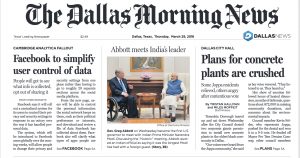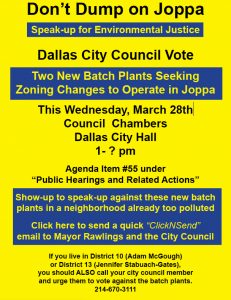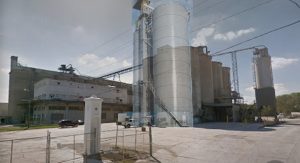Uncategorized
This Year @EDX: Stop By and See Our Wall of PM Video Art

Downwinders is very lucky to have Dallas media lab The Virtual Wild and its artist-owner artist Jay Rutherford creating a special video display of the data we’ve collected with our new portable PM monitors for this year’s Earth Day X @Fair Park. Using a large 72- inch video monitor as his palette, Jay is painting with light and code to produce a really memorable exhibition. His mission: to make air pollution more interesting and show it new contexts and perspectives. This year we’ll be side-by-side with our partners at the DFW Air Research Consortium. UTD scientists and others will be showing off their own monitor hardware and Downwinders will have its portable monitors to demonstrate as well. Come by and enjoy Jay’s handiwork and stick around to look at the equipment that’s changing the way public health is protected in North Texas. |
Help Us Buy a Year-Round Air Monitor for Joppa
Donate Here.
Yesterday, the Dallas City Council voted 9 to 5 to deny approval of two new concrete batch plants in the Joppa neighborhood, a part of South Dallas already surrounded by heavy industry.
Among other things, the vote proved what a powerful new tool our new portable Particulate Matter monitors can be to citizens.

Up to now, the ability to know what’s in the air you’re breathing in real time has been rare and available only to government or industry.
Technology is making it more accessible.
Downwinders is making it more accessible.
And now you can make it more accessible for some of the people who need it most.
For the next seven days, any money donated to Downwinders at Risk through our online portal will go towards paying for a permanent stationary air monitor for the Joppa neighborhood.
We need $1600.
The monitors we’re using now, as well as the one we want to buy for Joppa, come from a lab in New Zealand that was just picked by EPA as its partner in a nationwide low-cost/high-tech air monitoring effort. They’re very good. And that’s what makes them dangerous to polluters. 
Joppa residents did their part and fought a good fight.
But they still need help with reducing pollution from the huge rail yard, asphalt plant, and roofing materials plant that all sit right across the street. Documenting their exposure to Particulate Matter 24/7, year-round with a new air monitor would give them valuable information.
Citizens paying for that monitor sends a powerful signal to Dallas City Hall to step up to the plate and provide this kind of monitoring to all residents, beginning with those most under siege.
Whether its PM pollution or your contribution:
Small Stuff Adds Up. Every little bit helps.
Keep the pressure on. Help us bring 21st-Century air monitoring to Joppa.
Thanks.
Donate Here.
Tell the Dallas City Council to Stop Dumping on Joppa Before Tomorrow’s Batch Plant Vote – in 30 Seconds
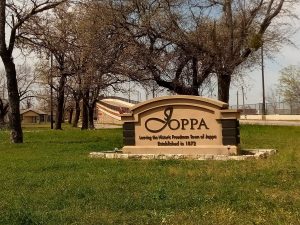 On Wednesday the Dallas City Council ill vote on whether to allow TWO new concrete bath plants in the tiny former freedman’s community of Joppa.
On Wednesday the Dallas City Council ill vote on whether to allow TWO new concrete bath plants in the tiny former freedman’s community of Joppa.
Already surrounded by heavy industry and a rail yard, these plants are opposed by the majority of Joppa residents, as well as their city council representative. Yet, it could be a close vote because of Business As Usual in South Dallas. i.e selling out the community’s health in return for “community development” money.
Don’t let it be a close vote. CLICK HERE to send an email message today telling Mayor Rawlings and the entire council you oppose these batch plants, the South Dallas Business As Usual approach, and the continuing legacy of environmental racism that still affects thousands of residents.
Tell the council to vote no. It takes only a few seconds but will mean a lot to the folks in Joppa. Thanks,
In Memory of Those That Showed-Up
Harriet Irby and Ann Trenton were not exactly local social activist celebrities, but they were well-known among the circle of more or less full-time environmental volunteers and organizers in Tarrant County and thereabouts.
Both Harriet and Ann were based out of Arlington, and were incredibly civic-minded, but that’s not what they had most in common, or what made them valuable to change-makers like Downwinders.
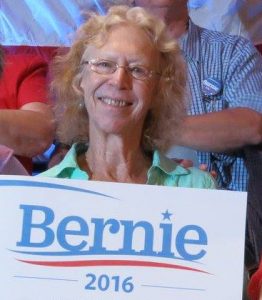
Ann Trenton
They both had a certain reputation: Harriet and Ann showed-up when you needed them to. Anywhere. Anytime. They were…reliable protesters. Which makes their separate-but-collective losses in the last two weeks or so especially noticeable.
Need to fill a room for a state permit hearing? Need a letter sent to the city council? These women were on it. Every single time. Or so it seemed.
Your imagination may soar with clever protest plans or tsunami-like social media campaigns, but at the end of the day you always need people to show up to make it work, or those lofty plans crash with a thud. These women showed-up.
In our College of Constructive Hell-Raising, we teach persistence as an under-appreciated quality of Change. People just don’t understand how long the road can be to where they want to go. Harriet and Ann knew, and so they made Change their lifework. They weren’t just passing through. They were passing milestones in lives lived for Change.
It seems like both have been on our mailing list for most of our 24 years. We can’t remember end-of-the-year mailings where we didn’t peel off their address labels and stick them on envelopes. Because they were reliable donors as well. Not just to us, but to a host of other groups and causes. All of whom now have large holes in their lists now too.

Harriet Irby
It’s particularly hard to imagine not hearing Harriet harangue officials at air quality meetings any more – she was a good haranguer. Because she seemed so frail and towed an oxygen tank around – a non-smoker with COPD – there was a tendency for officialdom to give her lots of slack…which she promptly took and ran with until the slack ran out and the line cut. If she couldn’t get out of the house that often and do other things for the cause, she would at least use her damn infirmaries to gain political advantage when she could.
The country needs more Harriets and Anns, not fewer, and so one would like to think that among the throngs of newly-motivated-to-act teens that the current administration has produced, there are some who already understand the value of just showing-up…for the rest of their lives. Rest in Peace Harriet and Ann – although it’s just as likely you’ve probably already started a project or campaign that will keep you busy for awhile.
Meet Our New Scientist
 Downwinders is proud to announce UNT’s own Dr. Tate Barrett as our new PM Science Director.
Downwinders is proud to announce UNT’s own Dr. Tate Barrett as our new PM Science Director.
Dr. Barrett will be coordinating all of our PM sampling in the field using our portable monitors. That includes helping to identify potential targets, training citizens on how to use the monitors, and distilling the results into citizen-friendly summaries.
Dr. Barrett is an Environmental Science graduate of Baylor University, where he also got his PhD from The Institute for Ecological, Earth and Environmental Sciences. He’s currently a post-doctoral Research Associate at UNT and has written at least five peer-reviewed, journal-published research paper on particulate matter and black carbon.
Dr. Barrett joins fellow UNT researcher Kari Northheim, our Wise County Ozone Project Director, in bringing scientific methodology and rigor to our grassroots air monitoring efforts.
Stay tuned as Downwinders and Dr. Barrett begin to assemble a citizen workshop on how to use the portable monitors. Graduates of these workshops will be cleared to use the equipment on projects approved by him.
Downwinders Debuts New Portable PM Monitors on DART Bus Routes
Downwinders at Risk’s PM Committee wasted no time in taking our new portable Particulate Matter monitors out in the field.
Less than two weeks after their arrival from New Zealand, Misti O’Quinn, Evelyn Mayo, Mandy Poland, Shannon Gribble and Cresanda Allen were using the devices to measure PM levels at DART bus stops and DART buses around Dallas this last weekend.
The group also conducted
an informal survey of DART riders on quality on air pollution concerns.
It was all part of a new effort to focus on PM pollution and public transit in preparation for this Wednesday’s combined meeting the the North Texas Transit Riders group. at GoodWork Co-working space, 1808 Good Latimer.
Bus riders are among those most heavily exposed to PM, both because of their exposure to traffic while waiting for a bus as well as the bus’ pollution itself.
Comparison and analysis of large “stationary” sources of PM pollution show that if DART bus pollution was coming out of a single smokestack, it would be the 10th largest source of PM pollution in North Texas.
Although the monitors’ PM sampling is in real time, the data collected has to be downloaded and logged by our new PM Science Director, Dr. Tate Barrett. There may be some results ready for Wednesday’s meeting.
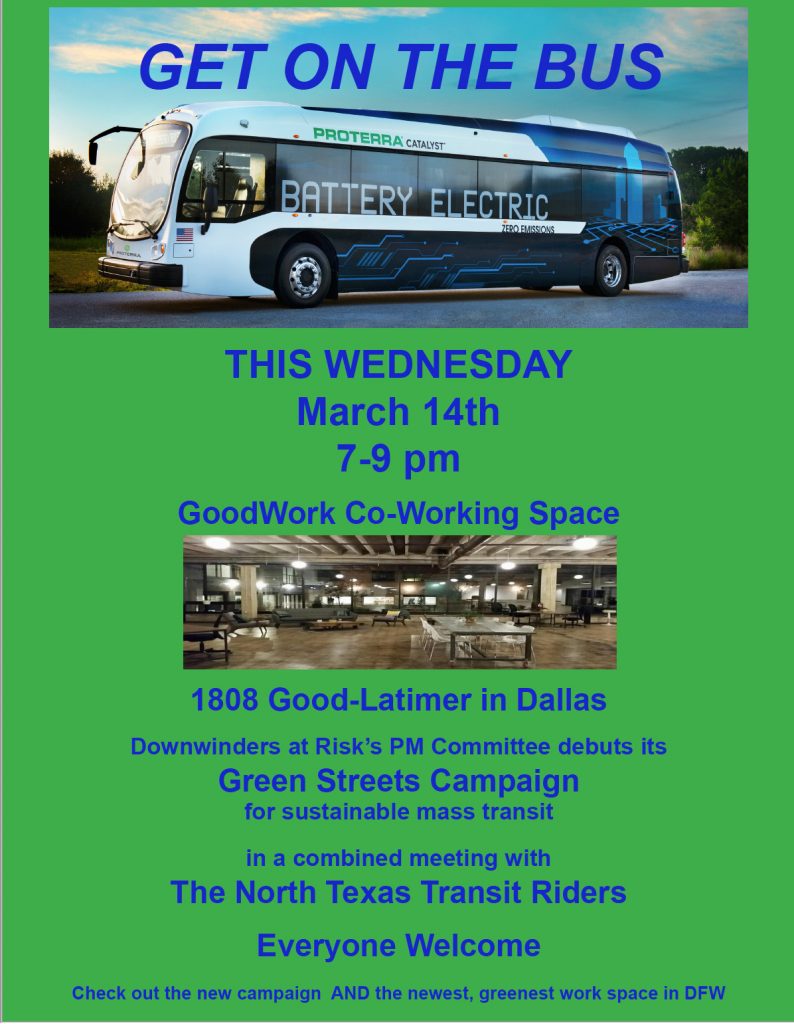
Two of these “Soot Trackers” Are On Their Way to Downwinders…and You
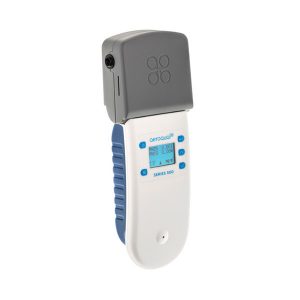 Thanks to a grant from the Simmons Sisters Foundation, Downwinders is proud to announce we’ve purchased our first two portable Particulate Matter sensors for our No Safe Level Campaign against PM pollution.
Thanks to a grant from the Simmons Sisters Foundation, Downwinders is proud to announce we’ve purchased our first two portable Particulate Matter sensors for our No Safe Level Campaign against PM pollution.
They’ll be the only PM monitors of their kind in the region, and their arrival will inaugurate a new era in DFW citizen-empowered science.
The sensors are made by AEROQUAL, a New Zealand company, and you can’t find them on Amazon. They measure both PM 10 and PM 2.5 (microns) at the same time. Their sensor heads use laser and optical sensors to measure light scattered from particles passing through the laser beam. A built-in fan ensures a stable and precise flow of sample air to the sensor. They also compensate for humidity by way of an on-board humidity sensor.
Each comes with a long-life Lithium battery which allows for 24 hours of remote operation between charges. Recharging takes just 3 hours. The monitor can be plugged-in and left to run indefinitely. Besides displaying levels in real time, measurements can be stored on the device and downloaded later to a computer via the USB cable and bundled software.
They come factory-calibrated to European Union standards and are capable of being re-calibrated for side-by-side use with an EPA monitors, or any other local baseline. 
These monitors have two parts – a base and a a detachable sensor head – making them even more useful. In the future Downwinders can buy other kinds of sensors from AEROQUAL to plug into the base and test for gaseous pollutants like Ozone, or Sulfur Dioxide. In all, 28 other sensors are available.
Before now you either had to buy $16,000 PM sensors that were fully calibrated or settle for much less reliable equipment. But the technology is moving so quickly and demand is scaling up so fast that a middle-income niche market for scientifically-rigorous instruments is beginning to provide opportunities to non-profit groups like Downwinders, and the public in general.
Along with these portable sensors, we’re also ordering stationary PM monitors as part of the regional network being established by UTD and others.
As a result of this influx of technology, Downwinders is creating a PM Project Science Director position to maintain the integrity of our research. The Science Director will be in charge of these monitors, training citizens on how to operate them, and overseeing their use in the field.
Our plans are to begin using the sensors in neighborhoods and suspected hot spots as soon as possible to help us fill out our PM Map of DFW. We want to be able to loan them out to those citizens who’ve gone through the training and have a problem they want to investigate. They’ll also be available for use during accidents, explosions, and fires.
We’re not letting state and EPA rollbacks stop us. We’re creating our own regional air monitoring network. Are you interested in joining? Stand by. We’re just getting started.
An Italian Multinational is Using West Dallas to Import Toxic Cement into North Texas
And BuzziUnicemUSA wants the City’s permission to build a new 170-foot tall silo to store it in
Just when you thought you had a handle on the environmental hazards plaguing West Dallas, up pops another out of left field.
Lead, sure. Asbestos, check. Benzene too. Arsenic, yes.
But you might not expect rail cars and silos full of finely-grained toxic cement – cement made by burning hazardous waste as “fuel” in a cement plant. Cement that still has the residues of that hazardous waste inside it. Residues like lead, and arsenic and Dioxins – the stuff in Agent Orange.That was one of the unpleasant surprises during a February 1st on-site meeting between neighborhood activists and the folks who own and operate the Buzzi cement terminal on Lone Star Drive between Commerce and Singleton to discuss the construction of a huge new silo at the facility.
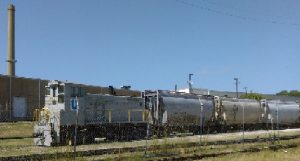 BuzziUnicemUSA is a huge Italian-based multinational. In the US, the Company operates 7 cement manufacturing plants and 29 other distribution terminals in the United States besides the one in West Dallas.
BuzziUnicemUSA is a huge Italian-based multinational. In the US, the Company operates 7 cement manufacturing plants and 29 other distribution terminals in the United States besides the one in West Dallas.
On February 22nd, Buzzi is scheduled to come before the City of Dallas Board of Adjustment seeking a “height variance” that would allow it to build the new silo 17 stories tall – 60 feet further up than they can go now with current zoning restrictions.
With the exception of the abandoned but still-standing 1920’s garbage incinerator smokestack just a couple of blocks away on West Commerce, it would be the tallest structure in West Dallas.
The idea of yet another industrial eyesore in a neighborhood that has battled for over a century with such things was not well-received by the delegation of neighborhood residents. Nor was the news that the company didn’t have a Plan B for addressing their concerns.
But perhaps most surprising was the news that the company was importing cement from its hazardous waste burning kilns in Missouri and off-loading it in Dallas to be used in the construction boom here.
To know how offensive that might strike residents and local environmentalists, you have to know history. Lots and lots of history.
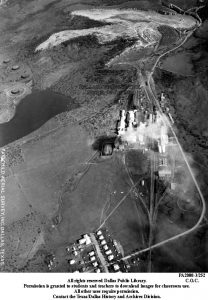
The Trinity Portland Cement Plant in West Dallas 1906-1984, Dallas Public Library
West Dallas was founded in part when a group of Galveston investors established the Trinity Portland Cement Company in 1906 and imported an entire Mexican village to build and run their cement kiln.
“Cement City” was established a couple of miles west of the then-Dallas city limits, and existed on the books up into the 1960’s. This was part of the White Establishment pattern of keeping those deemed “undesirable” – polluters and people – segregated from Dallas proper. Many West Dallas families can trace their beginnings in this country to these first cement plant workers.
Even after a growing Dallas swallowed Cement City, the West Dallas cement plant remained. In 1984, its owners announced plans to begin burning hazardous waste instead of oil or gas as a “fuel” for making its product.
But 1984 happened to be the year West Dallas residents’ fight against wholesale lead contamination from the RSR smelter was reaching its climax. They were forcing a complete closure (a complete clean-up would take much longer), and were in no mood to battle another source of toxic pollution.
At that time, the community was represented in Congress by U.S. Representative Martin Frost, a mid-cities Democrat. He was able to draft and successfully pass what became known as “The Frost Amendment” which prohibited the burning of hazardous waste in cement kilns located in any U.S. city with 500,000 or more residents. Welding the law’s language as carefully as a surgeon’s knife, Dallas was the only city affected.
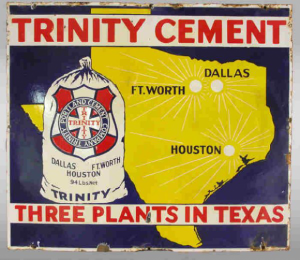 Without the prospect of becoming a hazardous waste incinerator and being able to charge for waste “fuel” instead of having to pay for gas or coal, the West Dallas cement plant closed shortly after Frost’s amendment was passed.
Without the prospect of becoming a hazardous waste incinerator and being able to charge for waste “fuel” instead of having to pay for gas or coal, the West Dallas cement plant closed shortly after Frost’s amendment was passed.
Two years later the idea would surface again in near-by Midlothian, the self-proclaimed “Cement Capitol of Texas” with three cement plants and only three thousand residents. This is Downwinders at Risk’s creation story. We’re here because of those Midlothian waste-burning cement plants and the multi-decade campaign citizens fought to end it.
Part of that ending was the successful “Green Cement Campaign” which persuaded local governments to quit buying and using the cement from the dirtier waste-burners in favor of those cement plants using conventional fuels. Dallas was the first of a dozen cities and counties to pass a Green Cement procurement ordinance. Fort Worth, Plano, and Arlington passed similar ordinances. They were the reason why TXI decided to stop burning hazardous waste in 2008. For the first time in over 20 years, no toxic cement was being made or used in North Texas. Most locals probably thought they would never have to deal with the subject again.
Which makes the news of Buzzi’s importing of cement from Missouri waste-burning kilns very disappointing indeed. Apparently the company is shipping tons and tons of the stuff into Dallas for Ready-Mix to use in a host of construction projects, including many in Frisco. It’s quite possible the the new Cowboys facility there is being built with cement containing the residues of hazardous wastes, including lead.
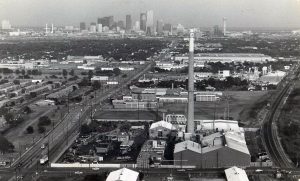
The RSR lead smelter in Dallas, 1981
And that’s problematic because much like West Dallas, Frisco has had a long toxic dance with lead. The ancient and dilapidated Exide lead smelter was shut down in 2012 because it was violating lead air pollution standards. It’s not operating now, but the land the smelter owned is still severely contaminated and at the center of a bitter legal battle between the City and Exide. How ironic is it for Frisco to have recently rid itself of a lead smelter only to have lead waste imported into the city and disposed of under the guise of cement?
How ironic to have Dallas and Plano help stop the manufacture and use of local toxic cement, only to provide a commercial market for Missouri’s?
And for West Dallas to get rid of one of the its first environmental injustices, stop the original waste-burning wanna-be in its tracks, and still find itself a major depot for toxic cement?
Residents who want to see West Dallas continue to overcome and redress its racist past should be at the Board of Adjustment hearing at City Hall on the 22nd. Call Trena Law @ (214)670-4206 to get details about time and speaking opportunities. Stay tuned.


